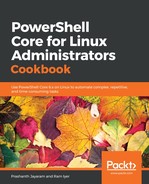In the recipe, Selecting columns from the output, we used a hashtable to set the name and the expression for a custom-named column. Later, we also used a small calculation within the Select-Object statement to get a calculated output. If you tried to select the column by the new name, that would have worked, too. Technically, you have already extended the object. But what is type data anyway? And why do we need a recipe to extend it when we can work with Select-Object?
Going too deep into what type data is and how to work with them along with .NET classes and objects could potentially make the concept an "advanced" one. Historically, most of us learners have procrastinated learning "advanced" topics. Therefore, we will stick to the simple parts of it, and work only with PowerShell for now. This recipe will serve as a launchpad to help you understand what it is by making it simple and fun, keeping it away from anything "advanced", in the interest of learning.
There are two options to extend the type data:
- Using PowerShell cmdlets (to understand how it all works)
- Using an XML file (for portability)
